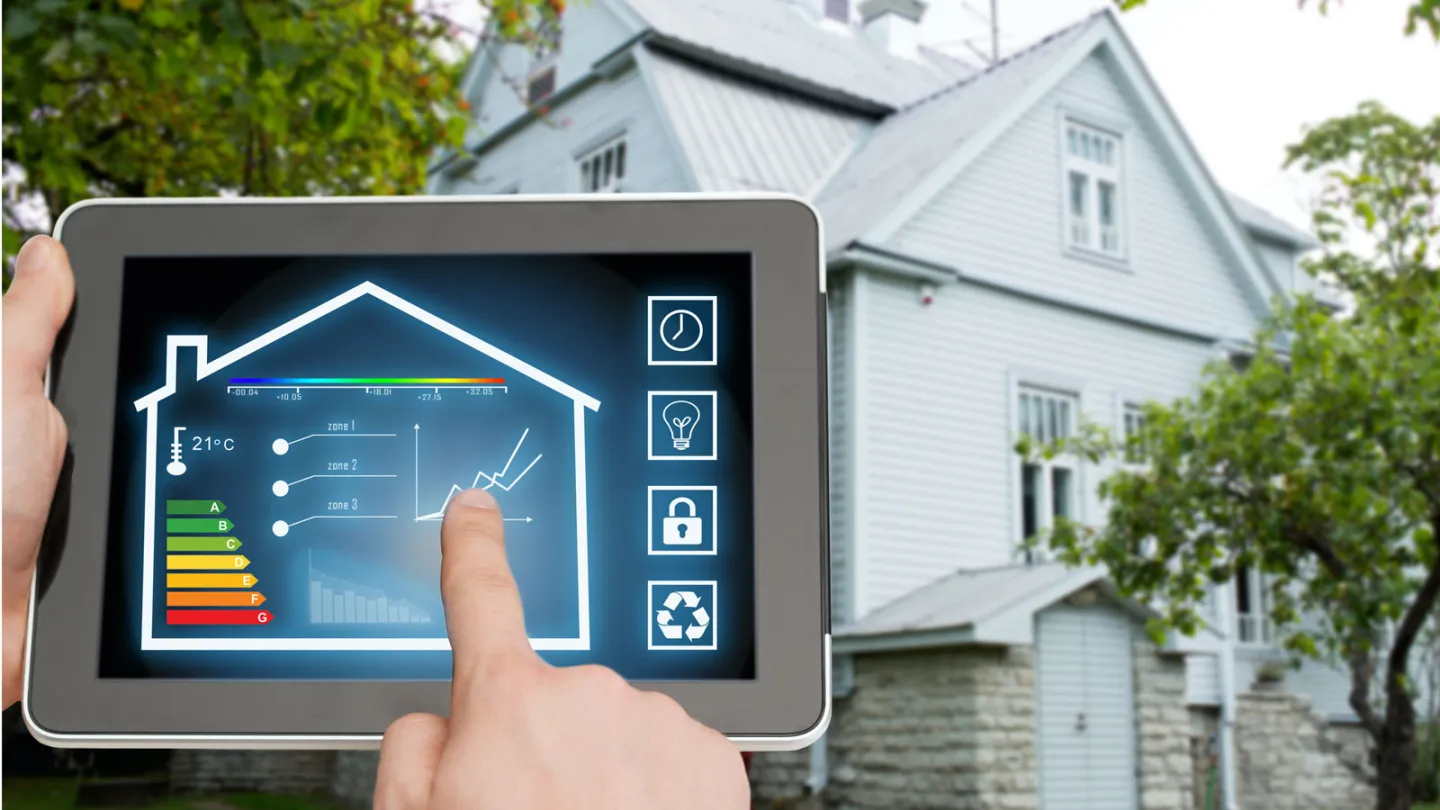For decades, home comfort systems operated on simple principles: a thermostat would detect the temperature in one area of the house and signal either the gas furnace or the air conditioning unit to turn on or off. While effective to a point, this one-size-fits-all approach often left rooms too hot, too cold, or unevenly conditioned. Today, Wi-Fi thermostats and zoning systems are changing that reality, giving homeowners a new level of control, efficiency, and personalization. Yet, with these advancements come new considerations, trade-offs, and challenges that are worth examining closely.
This article explores the evolving role of Wi-Fi thermostats and zoning in managing home heating and cooling. It will analyze how these technologies interact with a residential furnace and an AC unit, the factors that influence performance, and the balance homeowners must strike between convenience, efficiency, cost, and long-term reliability.
Understanding the Basics: What Are Wi-Fi Thermostats and Zoning Systems?
A Wi-Fi thermostat is a modern thermostat that connects to the internet, allowing users to control their home’s temperature remotely through smartphones, tablets, or computers. Beyond remote access, these devices often include advanced features such as learning user behavior, integrating with smart home systems, and offering detailed energy usage reports.
Zoning, on the other hand, refers to dividing a home into multiple areas or “zones,” each of which can be controlled independently. In traditional systems, a single thermostat governs the entire household, meaning that a setting in the living room determines comfort in the bedrooms, kitchen, and basement as well. With zoning, dampers installed within the ductwork open or close based on demand, allowing the gas heating system or the air conditioning system to direct air only where it is needed.
Together, Wi-Fi thermostats and zoning systems provide a powerful solution. They not only give users direct control over a gas furnace and an air conditioning unit but also optimize energy use by focusing comfort where it matters most.
Why These Technologies Matter
Heating and cooling are among the largest energy expenses in American households. According to the U.S. Energy Information Administration, space heating and cooling account for nearly half of residential energy consumption. This means even small improvements in efficiency can translate into significant savings.
When paired with a residential furnace and AC unit, Wi-Fi thermostats and zoning systems offer multiple advantages:
- Energy Efficiency: Targeting only occupied rooms reduces wasted heating and cooling.
- Comfort Customization: Different zones can accommodate varying preferences. For instance, a cooler bedroom at night and a warmer living room in the evening.
- Convenience: Remote control through an app allows adjustments from anywhere.
- Integration: Smart thermostats can interact with other home systems, such as lights, blinds, or even weather forecasts, to optimize performance.
Despite these advantages, homeowners must weigh certain trade-offs before investing.
Trade-Offs in Efficiency, Comfort, and Cost
1. Energy Savings vs. Upfront Cost
A zoning system requires additional components, such as dampers, zone controllers, and sometimes multiple thermostats. The installation can cost significantly more than a standard system. Wi-Fi thermostats themselves can range from affordable models under $100 to high-end units that cost several hundred dollars. While the savings on energy bills may offset these costs over time, the payback period varies depending on the size of the home, existing insulation, and how diligently the system is used.
2. Comfort vs. System Strain
Customizing each room’s temperature improves comfort, but if zones are poorly designed or if the dampers close too many ducts simultaneously, the gas heating system or air conditioning system may face pressure imbalances. Over time, this can strain equipment, leading to wear, noise, or even failures. Proper installation and design are crucial to prevent these problems.
3. Simplicity vs. Complexity
Traditional systems are easy to understand: one thermostat, one setting. Wi-Fi thermostats and zoning introduce complexity—multiple thermostats, smartphone apps, integration with smart homes. While many homeowners enjoy this flexibility, others may find it overwhelming or unnecessary. Balancing ease of use with advanced features is an important consideration.
4. Automation vs. User Control
Wi-Fi thermostats often learn from user behavior and make automatic adjustments. This automation can maximize efficiency, but not everyone is comfortable with algorithms controlling their residential furnace or AC unit. Some prefer to maintain manual control, which can reduce the system’s overall efficiency if adjustments aren’t optimized.
Challenges Associated with Implementation
Technical Compatibility
Not every existing HVAC system is compatible with zoning or Wi-Fi thermostats. Older gas heating systems may lack the necessary controls to communicate with modern thermostats. Similarly, certain air conditioning systems may not handle the airflow changes introduced by zoning dampers. Compatibility checks are a must before installation.
Installation Complexity
Installing zoning requires modifications to ductwork, adding dampers, and wiring multiple thermostats. This is not a simple DIY project; professional expertise is required, which increases labor costs. Incorrect installation can result in airflow problems or even reduced efficiency compared to a traditional setup.
Connectivity Reliability
Wi-Fi thermostats depend on stable internet connections. In areas with unreliable service, or during network outages, some advanced features may stop functioning. Although most thermostats retain basic temperature control offline, remote management and data insights may be unavailable.
Learning Curve for Homeowners
Even with user-friendly apps, homeowners may face a learning curve in understanding scheduling, zoning control, and integration with other devices. Poor use of settings can undermine potential savings.
Technological Integration and Innovation
Wi-Fi thermostats are evolving rapidly. Features such as geofencing can detect when users leave or approach home, adjusting the residential furnace and AC unit automatically. Voice assistants like Amazon Alexa, Google Assistant, and Apple HomeKit allow voice control of temperatures. Some systems use weather forecasts to anticipate heating or cooling needs, while others provide detailed energy usage reports.
For zoning, new technologies are addressing previous challenges. Smart dampers now adjust more gradually, avoiding pressure imbalances. Wireless sensors reduce the need for extensive wiring. Some systems even allow homeowners to expand zoning gradually, starting with two zones and adding more over time.
Balancing Environmental Impact
One often overlooked factor is the environmental impact of heating and cooling decisions. A gas heating system contributes to greenhouse gas emissions due to natural gas consumption, while an air conditioning system may use refrigerants that carry environmental risks. Wi-Fi thermostats and zoning can mitigate these impacts by reducing overall energy consumption, but they are not a silver bullet.
For eco-conscious homeowners, these technologies should be considered alongside broader improvements such as insulation upgrades, energy-efficient windows, and renewable energy integration. For instance, using a Wi-Fi thermostat to optimize a residential furnace powered by solar panels can multiply the environmental benefits.
Practical Scenarios and Use Cases
- Large Multi-Story Homes
Without zoning, upstairs rooms often overheat in summer while downstairs remains cool. Zoning allows separate control, so the AC unit isn’t overworked trying to satisfy all areas simultaneously. - Homes with Varied Occupancy
Families that use certain rooms only part of the day can save energy by directing conditioned air only where needed. For example, the basement playroom might not need constant heating from the gas heating system when it’s unused. - Households with Different Preferences
Some family members prefer cooler bedrooms, while others want warmth. Zoning resolves this conflict, ensuring comfort without compromise. - Vacation or Rental Homes
Wi-Fi thermostats allow owners to monitor and adjust conditions remotely, ensuring the air conditioning system doesn’t run wastefully when the property is vacant.
Considering the Long-Term Value
When evaluating whether to adopt Wi-Fi thermostats and zoning, it’s essential to consider long-term impacts, not just short-term costs. A well-designed system can:
- Prolong the life of both the residential furnace and the AC unit by reducing unnecessary run times.
- Increase home resale value by appealing to tech-savvy buyers.
- Adapt to future technologies, as most Wi-Fi thermostats receive software updates and can integrate with expanding smart home ecosystems.
However, the long-term value depends on proper installation, thoughtful design of zones, and consistent homeowner engagement with the system.
The Role of Professional Guidance
Given the complexities, professional guidance is invaluable. HVAC contractors can evaluate ductwork, system compatibility, and household needs to design an optimal zoning plan. They can also recommend specific Wi-Fi thermostats that work best with the existing gas heating system and air conditioning system. Homeowners who bypass professional input risk inefficient designs that underperform or cause mechanical issues.
Striking the Right Balance
At its core, the decision to adopt Wi-Fi thermostats and zoning systems revolves around balancing competing priorities:
- Cost vs. Savings: Higher upfront investment for potential long-term reductions in utility bills.
- Comfort vs. Simplicity: Enhanced customization at the expense of added complexity.
- Automation vs. Control: Relinquishing some decisions to technology while retaining manual oversight.
- Efficiency vs. Equipment Strain: Reducing energy waste without overburdening HVAC components.
Every household will weigh these trade-offs differently, depending on budget, lifestyle, and long-term goals.
Wrapping Up
Wi-Fi thermostats and zoning represent a significant evolution in home climate control. By offering granular management of a gas furnace and an air conditioning unit, they provide unprecedented opportunities for energy savings, comfort, and convenience. Yet, they also introduce challenges related to cost, compatibility, complexity, and environmental considerations.
For homeowners considering these technologies, the most effective approach is to view them as part of a broader strategy for efficient living. When paired with good insulation, energy-efficient appliances, and informed usage, Wi-Fi thermostats and zoning systems can transform a household’s relationship with its residential furnace and AC unit. Ultimately, success lies not in adopting technology for its own sake, but in thoughtfully balancing the benefits and challenges to create a system that truly meets both present and future needs.
Read More Gorod







